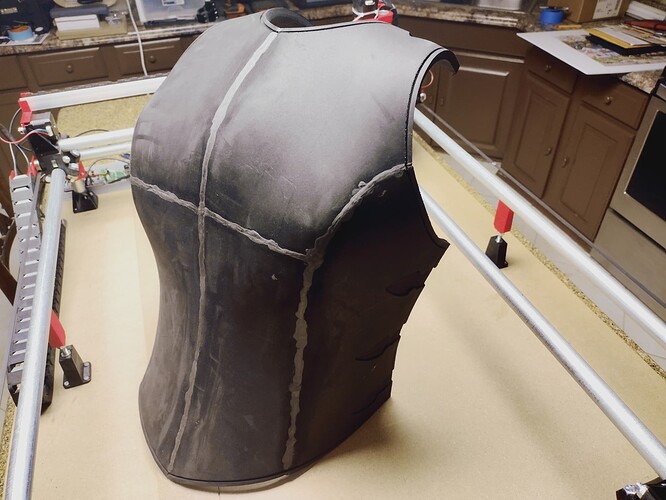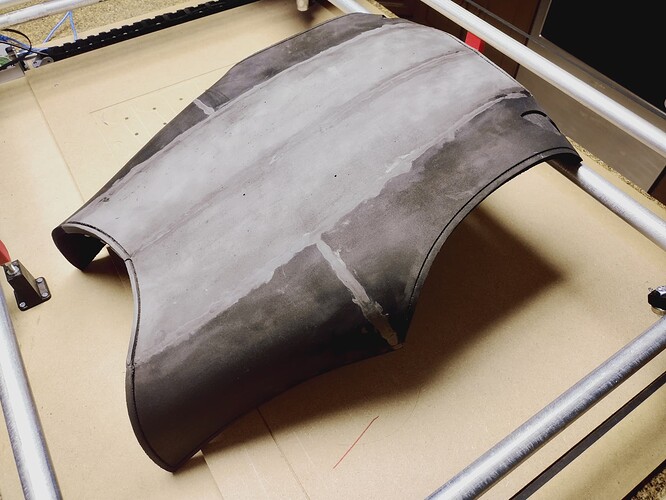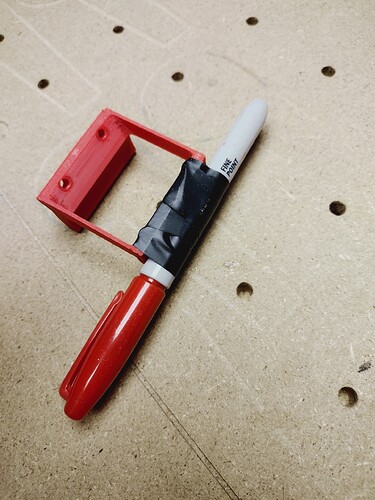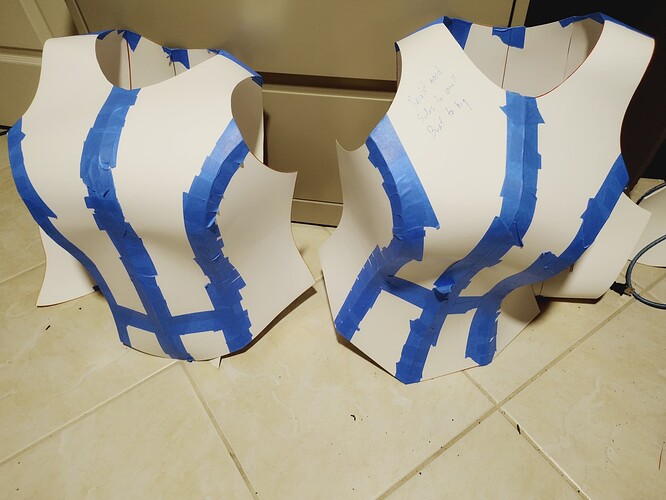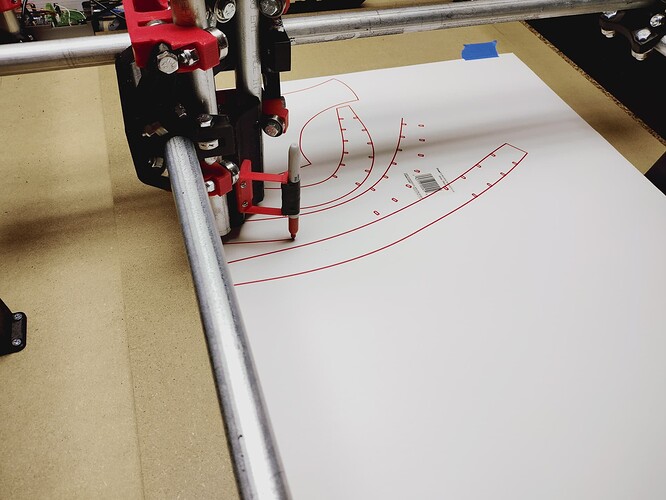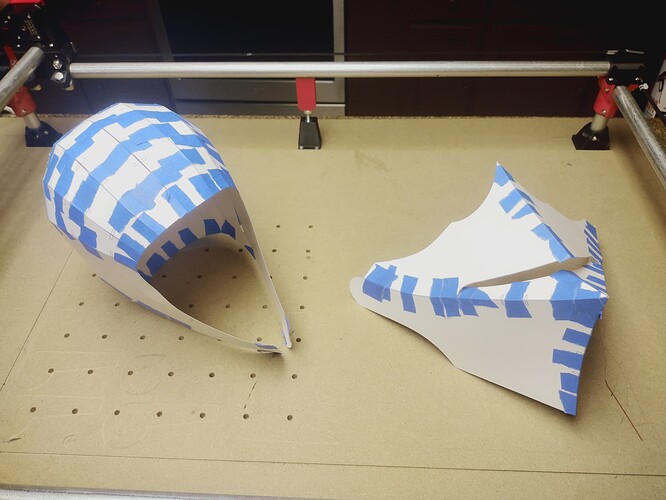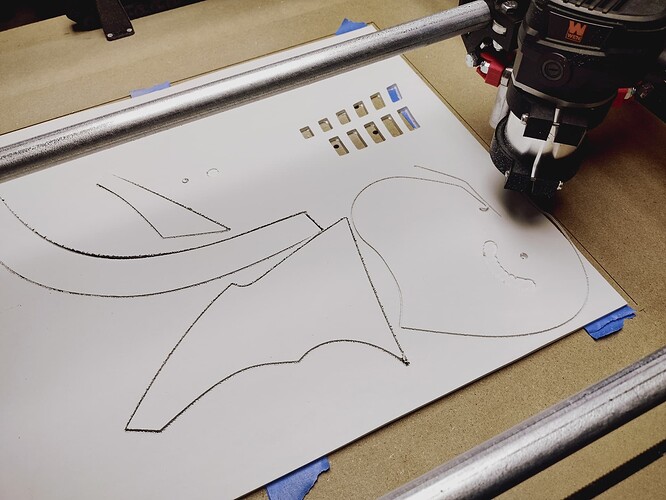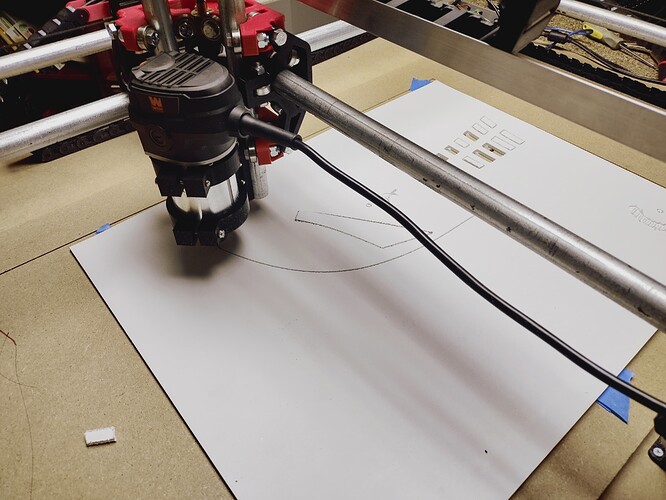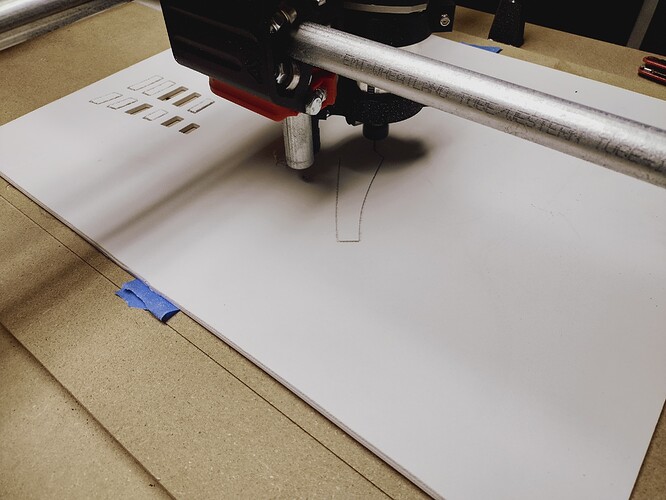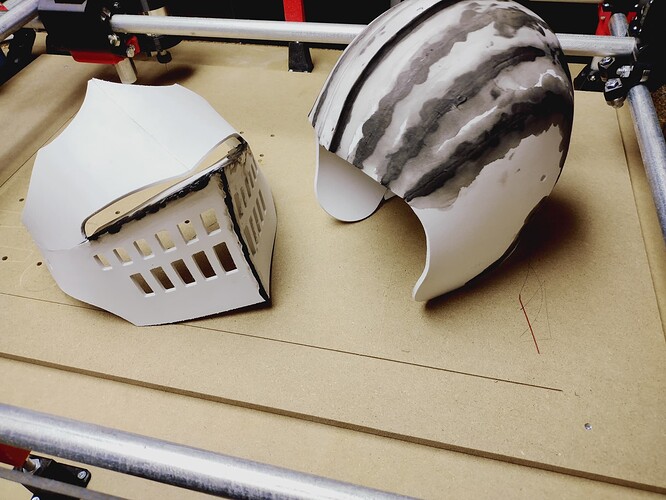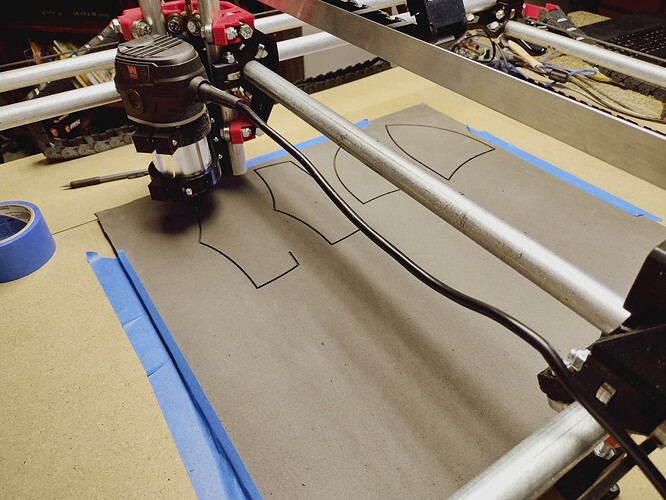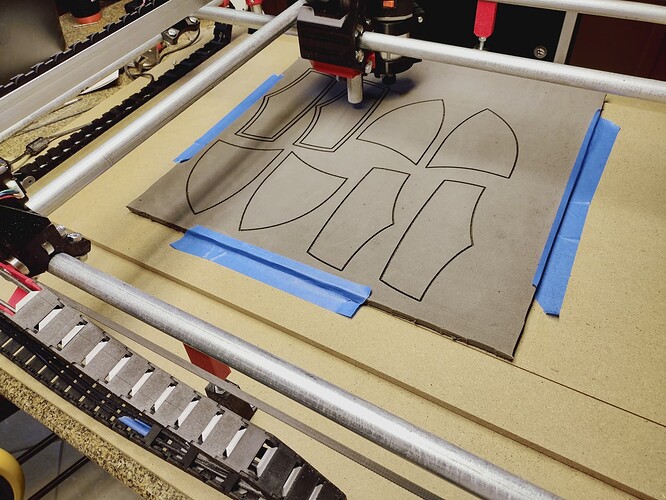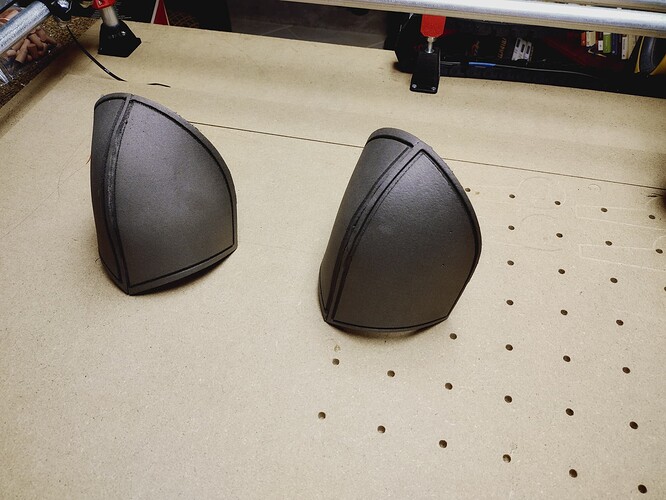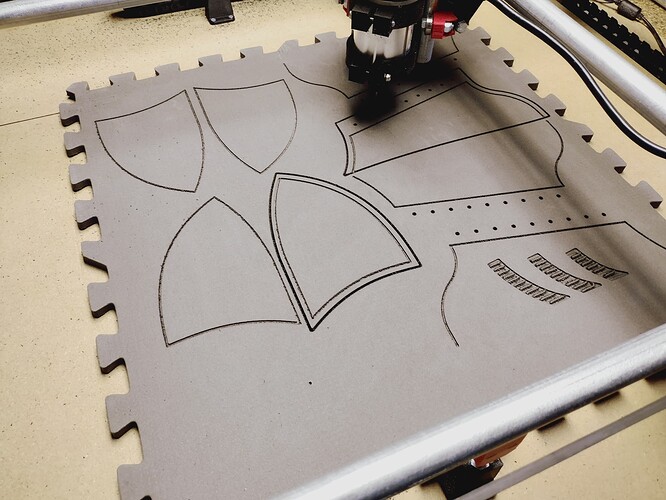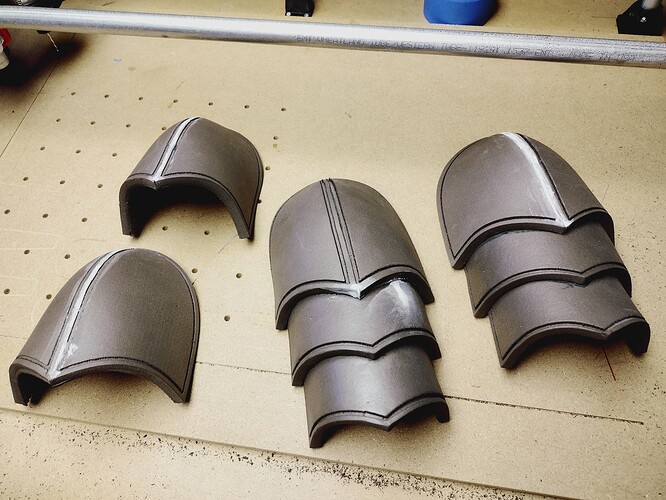I’m using a template that I bought, but I’ve made some changes to it. This is my second time making something with EVA, and the first time making something with curves, so it made sense to buy a template. In the future, I definitely want design my own stuff, I’m pretty good at 3D modeling (both surface and solid).
I can detail the things I did do with this project though - I bought this design from Etsy - Standard Female Fantasy Upper Body Armor Foam PATTERN / - Etsy It came as a PDF download. I opened the PDF in Illustrator and broke it apart into the individual armor pieces. It was set up for printing on standard A4 paper, taping it all together, then tracing onto foam by hand, so there were a ton of clipping masks.
Once I had all the pieces isolated, I arranged them to fit on some posterboard and then used a sharpie attached to the router to draw them out.
The standard “pen holder”, utilizing the latest in electrical tape technology to hold the sharpie
I took my highly accurate drawings and cut them up with less-accurate scissors, then taped them up to check fit and sizes. Once I had one put together, I went back to Illustrator and made some adjustments. Honestly, I was just winging it - I had some measurements, but trying to adjust 3D elements in a 2D space is a bit tricky. I dialed back a few of the curves, resized a few pieces, then put together another one.
The person I’m making the armor for tried that one on and we were satisfied with how it fit, so I moved on to the next part. I designed the straps (the white parts) in Illustrator, cut them out of 5mm foam. I took the strap outlines and added them to the armor pieces, as well as doing some path offsets to make the groove that you can see around the edges of the armor.
I set up a template in Illustrator that was sized for my router’s work area, and did a metric boatload of rotating, mirroring, cutting, swearing, rotating again, and nudging to try and pack the parts into as little area as possible. EVA isn’t exactly cheap, so I didn’t want to waste any. If anyone has suggestions on packing/nesting software, please feel free to chime in.
Exported everything as dxf’s, pulled them into EstlCam, found all the things I messed up, fixed them, and repeated the process more times that I would care to admit.
Pocketed out where the straps would attach, engraved the groove around the edges, and then cut the parts out. It’s kinda funny, when I first started putting together my MPCNC, I figured the bulk of the work would be at the machine. I was coming from 3D printing where slicing is a breeze and the workflow is pretty minimal. Now that I’ve got my feet wet, I realize that the machining is the easy part! I had my feeds and speeds dialed in pretty well, so I taped the foam down, zero’d everything, hit “Run” and sat back. Less then an hour of machine time, probably 10-20 hours working on design and setup.
